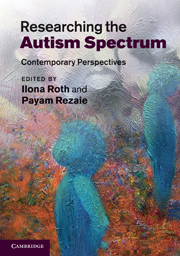Book contents
- Frontmatter
- Contents
- Preface
- Foreword
- List of Contributors
- Introduction
- Part I Classification and Diagnosis
- Part II Genetics, Neurology and Biochemistry
- Part III Cognition, Development and Education
- 7 Psychological models of autism: an overview
- 8 Cognitive flexibility in autism: a social-developmental account
- 9 Language in autism spectrum disorders
- 10 Memory in autism: binding, self and brain
- 11 Measuring executive function in children with high-functioning autism spectrum disorders: what is ecologically valid?
- 12 Autism spectrum disorders in current educational provision
- Index
- Plate section
- References
10 - Memory in autism: binding, self and brain
Published online by Cambridge University Press: 04 February 2011
- Frontmatter
- Contents
- Preface
- Foreword
- List of Contributors
- Introduction
- Part I Classification and Diagnosis
- Part II Genetics, Neurology and Biochemistry
- Part III Cognition, Development and Education
- 7 Psychological models of autism: an overview
- 8 Cognitive flexibility in autism: a social-developmental account
- 9 Language in autism spectrum disorders
- 10 Memory in autism: binding, self and brain
- 11 Measuring executive function in children with high-functioning autism spectrum disorders: what is ecologically valid?
- 12 Autism spectrum disorders in current educational provision
- Index
- Plate section
- References
Summary
Memory can be thought of as the capacity of an organism to utilise past experience in order to direct current and future behaviour. Such a capacity entails the registering and recording – the encoding – of that experience in such a way as to enable its subsequent retrieval. Retrieval can be either voluntary or involuntary and the resultant information may or may not form part of conscious awareness. The processes of encoding and retrieval are the result of a range of psychological processes and are in turn influenced by other factors both psychological and physiological. In this respect, study of the patterning of memory processes and the factors that influence their operation can give clues to the wider psychological functioning of the individual. It is in this last respect that the study of memory can enhance our understanding of people with Autism Spectrum Disorder (ASD). ASD is not ‘caused by’ difficulties in memory, but the patterning of memory seen in individuals with ASD can provide clues to underlying cognitive and neuropsychological atypicalities as well as giving us a window onto their inner experiences of the world.
Preliminary remarks
Any discussion of memory in ASD must first emphasise the heterogeneous nature of the conditions that comprise the autism spectrum. An important aspect of this diversity is the distinction between ASD with accompanying intellectual disability (often referred to as ‘low-functioning ASD’ or LFA) and ASD without it (often termed ‘high-functioning ASD’ or HFA), a group that, as here defined, also includes individuals with Asperger's disorder.
- Type
- Chapter
- Information
- Researching the Autism SpectrumContemporary Perspectives, pp. 316 - 346Publisher: Cambridge University PressPrint publication year: 2011
References
- 48
- Cited by



